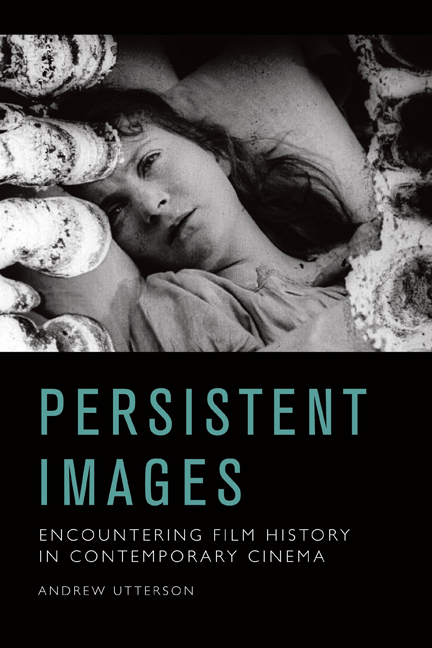Book contents
- Frontmatter
- Contents
- List of Figures
- Acknowledgements
- Introduction
- 1 Media Archaeology and the Memory of a Medium: Dawson City: Frozen Time
- 2 A Drone’s-Eye View of History: Francofonia
- 3 The Movie Theatre as Haunted Space: Shirin and 70×70
- 4 Recalling the Past Lives of Cinema: Uncle Boonmee Who Can Recall His Past Lives
- 5 3D Images at the Edge of History: Goodbye to Language and The Three Disasters
- 6 Voyaging in Deep Time: Voyage of Time: The IMAX Experience
- Notes
- Bibliography
- Index
1 - Media Archaeology and the Memory of a Medium: Dawson City: Frozen Time
Published online by Cambridge University Press: 26 September 2020
- Frontmatter
- Contents
- List of Figures
- Acknowledgements
- Introduction
- 1 Media Archaeology and the Memory of a Medium: Dawson City: Frozen Time
- 2 A Drone’s-Eye View of History: Francofonia
- 3 The Movie Theatre as Haunted Space: Shirin and 70×70
- 4 Recalling the Past Lives of Cinema: Uncle Boonmee Who Can Recall His Past Lives
- 5 3D Images at the Edge of History: Goodbye to Language and The Three Disasters
- 6 Voyaging in Deep Time: Voyage of Time: The IMAX Experience
- Notes
- Bibliography
- Index
Summary
What does it mean to encounter the memory of cinema long after its residue has been consigned to the past, abandoned or forgotten in the simultaneous decay of memory and matter? What, in particular, might be revealed by those who take on the archaeological task of uncovering layers of cinematic sediment?
Situating the contemporary moment as one where we might negotiate the cumulative archive of cinema and our cultural memory of the moving image, this chapter begins its historical task with one such analysis. It is a geological as well as an archaeological endeavour. Specifically, the emphasis is on the legacy of film and the cinematic layering of memory as filmic substrate, in a combination of erosion and eruption, accretion and avulsion, deposition and uplift.
To extend our historical approach, we might consider the directionality and flows of images across time. As well as digging down through layers of film history and their corresponding ages in the act of historical inquiry, there is also the possibility of the persistence of the past, when that which is buried or forgotten emerges, rising up through the matter of time. The moving image is not only sought in an exploratory excavation, but, as this chapter will demonstrate, it might also return unbidden from the past and rise to the surface of the present.
As an illustrative case study, Bill Morrison's Dawson City: Frozen Time (2016) represents one such encounter. It is a film explicitly concerned with archaeologies and geologies as historical concepts and historiographic strategies, using them in particular to engage cinematic histories. Media archaeology is rendered literal, illustrating the material and immaterial traces of a film history that reveals both the elemental geology of earthly deposits – its own photochemical past – and the temporal transformations of this filmic matter. It engages not just the materiality of a medium but the mnemonic resonance of this history, as aesthetically articulated and further mediated.
DAWSON CITY: FROZEN TIME: FILM HISTORY FROM BELOW
As the history of cinema is unearthed in Dawson City: Frozen Time, the deep time of cinema becomes also frozen time, and vice versa. The ground beneath us – terra firma – also becomes tempora firma – with the temporal dimension of history now registered through the geological sediment of archaeological discovery.
- Type
- Chapter
- Information
- Persistent ImagesEncountering Film History in Contemporary Cinema, pp. 7 - 25Publisher: Edinburgh University PressPrint publication year: 2020



